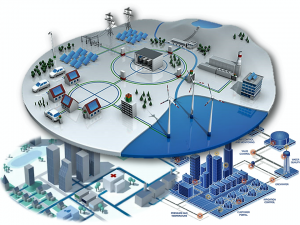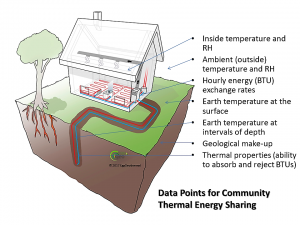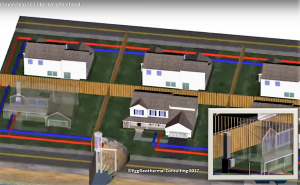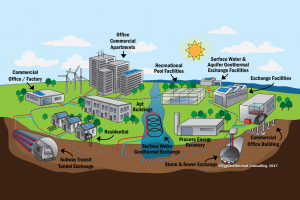
 This focused write up is based on an article originally published on LinkedIn about the recent spin-off of “Dandelion“ from X, the innovation engine of Alphabet (parent of Google). Reprinted with permission.
This focused write up is based on an article originally published on LinkedIn about the recent spin-off of “Dandelion“ from X, the innovation engine of Alphabet (parent of Google). Reprinted with permission.
BY JAY EGG
Validation comes in many different ways. Presently, New York State, NYSERDA, and now Dandelion are working toward implementation of geothermal heating and cooling. Ontarians are embarking on a similar path. Geothermal is needed infrastructure, just like the electric grid or city water mains. This has to happen, and now, it’s underway.
When we hear of “The Grid,” we often think of electrification. But there are more “Grids.” Think of the city water mains, wastewater, and of course communications, to name a few. The final frontier is the “Thermal Energy Grid.” To manage a grid, you have to have data. Data provides the information to know where the resources are needed.
Google Maps and Geothermal
Information is power for good in the right hands. Google-Maps are a great example of this. Thermal information is the new frontier. To have data points for temperature will prove enormously useful as we move forward. Imagine having all of the following data points for any area:
- Inside temperature and RH

- Ambient (outside) temperature and RH
- Hourly energy (BTU) exchange rates
- Earth temperature at the surface
- Earth temperature at intervals of depth
- Geological make-up
- Thermal properties (ability to absorb and reject BTUs)
The Renewable Thermal Energy Internet of Things (IoT)
Putting all of this data together for communities will provides real data that is useful for thermal energy sharing. In the image below, my artist depicted what my peers and I believe is the end result of this full integration of thermal IoT. Waste heat from building cooling towers and condensers is piped into pool and laundries and process heat need of all kinds. In winter, commercial building have plenty of waste heat that will be piped into residential use. IoT helps us to know where to send our BTUs.
EggGeothermal’s webmaster did this simplified video of a neighborhood grid about half-a-dozen years ago, but you’ll get the idea. It’s illustrated on a larger scale in this city grid that I prepared for a meeting with the NYC Commissioners a couple of years ago (see below). Sometimes, all that is needed to validate a renewable energy technology is a government stimulus. Other times, it takes somethin g more. In Ontario, that “something more” is an energy utility that has seen that geothermal is moving in as a real competitor to Natural Gas (NG). In New York, Dandelion may be that icing on the cake.
g more. In Ontario, that “something more” is an energy utility that has seen that geothermal is moving in as a real competitor to Natural Gas (NG). In New York, Dandelion may be that icing on the cake.
To find out more about geothermal opportunities for you, visit the New York Geothermal Exchange Organization (NY-GEO), the New York State Energy Research and Development Authority (NYSERDA), the International Ground Source Heat Pump Association (IGSHPA) or the Ontario Geothermal Association (OGA), websites.
Jay Egg is a geothermal consultant, writer, and the owner of EggGeothermal. He has co-authored two textbooks on geothermal HVAC systems published by McGraw-Hill Professional. He can be reached at jayegg.geo@gmail.com.
EggGeothermal focuses its efforts on geothermal consulting, writing, and speaking engagements. Among its clients are federal, state, local and international governments, developers, professional associations, and private entities. The company provides training and curriculum writing services and is a facilitator for organizations internationally, providing AIA continuing education credit and current information for industry professionals.
EggGeothermal is a voting member on the Uniform Solar Energy & Hydronics Technical Committee for the International Association of Plumbing and Mechanical Professionals (IAPMO), and a member of the Advocacy Committee for the International Ground Source Heat Pump Association (IGSHPA).




